These Are The Advantages To Growing Aquilegia In Pots (And Some Important Considerations)
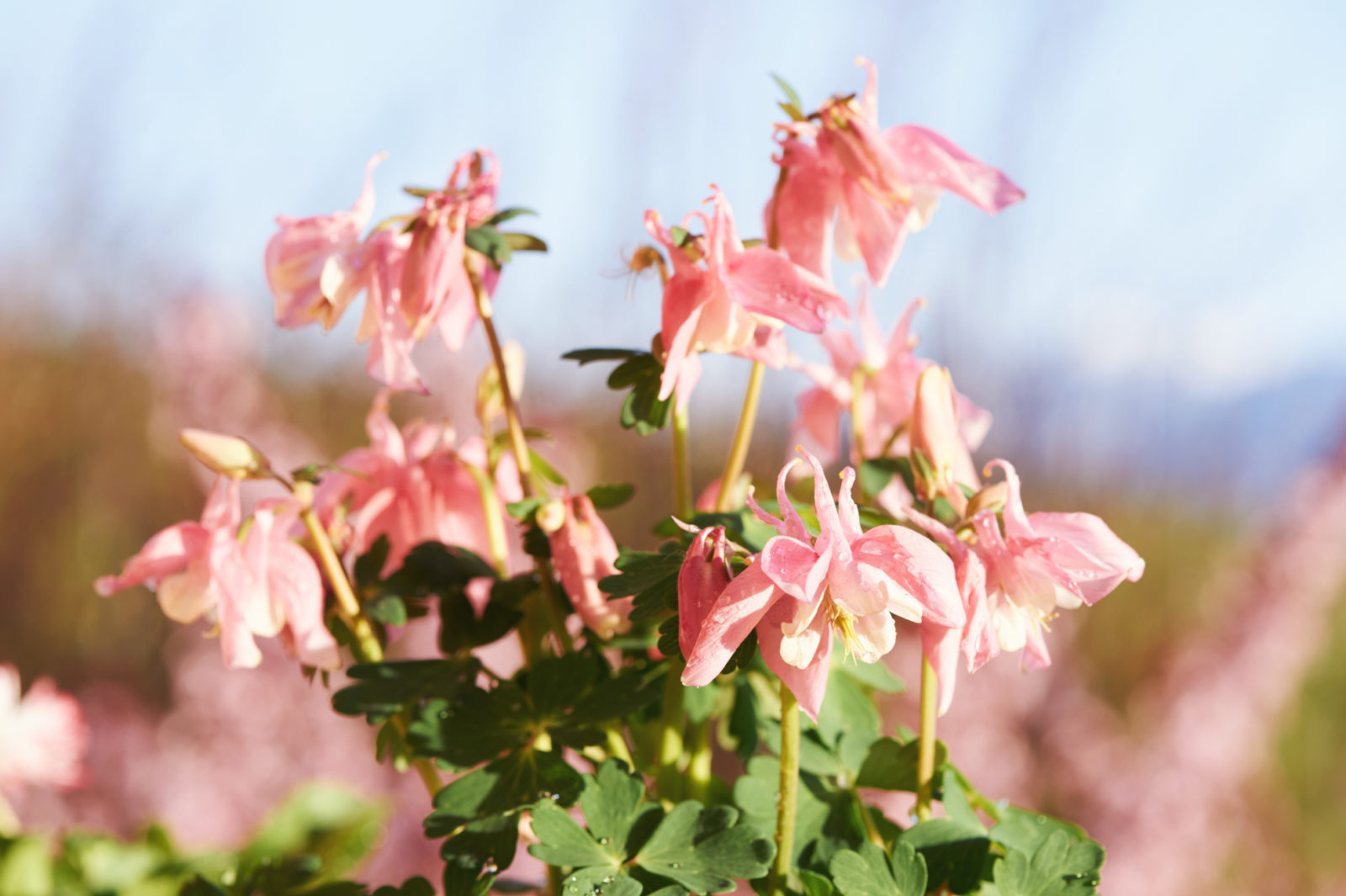
PERENNIALS > AQUILEGIA > CONTAINERS
Reviewed By COLIN SKELLY

Colin is a Horticulturist and Horticultural Consultant with experience in a range of practical and managerial roles across heritage, commercial and public horticulture. He holds the Royal Horticultural Society’s Master of Horticulture award and has a particular interest in horticultural ecology and naturalistic planting for habitat and climate resilience.
IN THIS GUIDE
AQUILEGIA GUIDES
Container Growing
Propagation
Varieties
Aquilegia or columbine varieties number in the many hundreds, with its varieties having been developed from four species.
It is little wonder then that some varieties show off brightly upright flowers and some are more muted.
Almost all varieties’ flowers are enclosed by long, tapering coloured sepals.
Flowers start blooming any time from late April to early June, and usually bloom for about one month.
Can You Grow Aquilegia In Pots?
Yes, and there are even a couple of advantages to doing so.
Aquilegias can be sown in pots in the summer or early autumn, and the developing plants can also be placed in a cold frame during the winter.

As a result, you may well get blooms the very next summer.
Also, potted Aquilegias afford you the flexibility of positioning the plants with their showy flowers during the blooming season on the patio or the doorstep.
Choosing A Container
Choose a plastic pot as it will not dry out the soil quickly, as this plant requires moist soil.
At the same time, the soil should be able to drain very well, so the pot must have holes.
As previously mentioned, Aquilegia comes in hundreds of varieties that descend from four species, so the height and spread that these plants can reach fall into several different ranges.
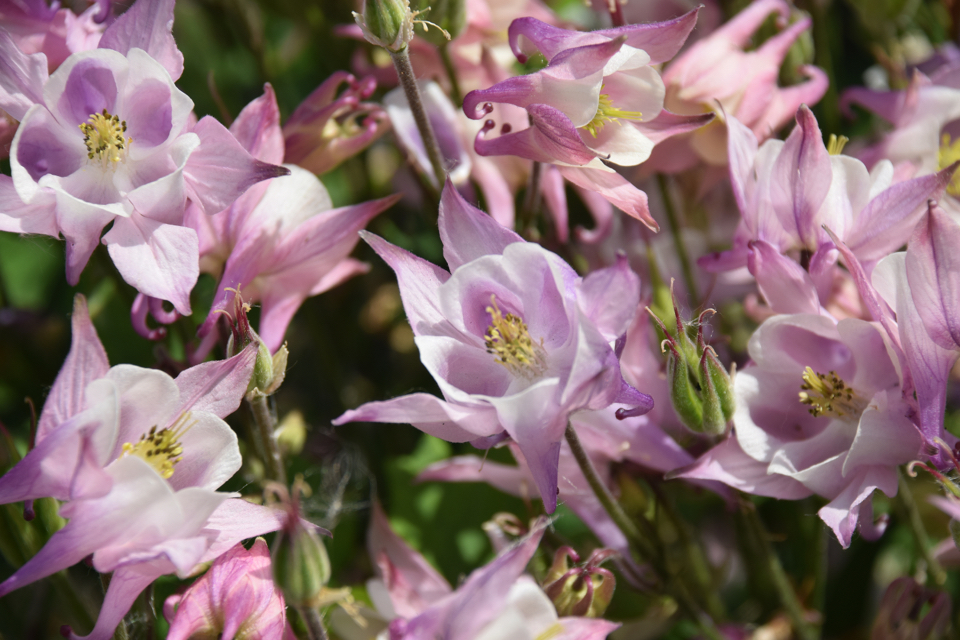
To select a container that will accommodate the plant when it is fully grown you will need to consider these variables.
In general, the pot’s shape should be tall and deep.
A 30-40cm high pot will work well for most varieties.
Selecting Suitable Compost
If you start seeds in a tray, use a seed starting mix or sterile potting mix.
If you sow seeds in a pot, use a mixed loam amended with organic compost to enhance fertility or a readymade potting compost mix.
“Proprietry mixes, such as John Innes, can help to make the appropriate compost selection: Seed mix for seed sowing, no.1 for young plants, no.2 for large plants, no. 3 for large pots and long-term planting,” shares Master Horticulturist Colin Skelly.
“These will provide the right levels of drainage, moisture retention and nutrients for the stage of growth.

“You can always make your own recipe but if you’re new to gardening, John Innes compost mixes are a good place to start.”
Either way, amend the soil with grit or perlite to improve drainage.
Amending the upper layer of soil with vermiculite will be very beneficial for Aquilegias as it will conserve soil moisture.
As an alternative, soon after the seedlings have matured, spread a layer of mulch several centimetres from the base of the stem.
Sowing & Growing
You can sow seeds directly in pots or start them in seed trays.
The seeds should not be fully covered by the growing medium or soil; they should be left just a touch exposed as they need light to germinate.
Consider covering the trays or pots with clear plastic film.
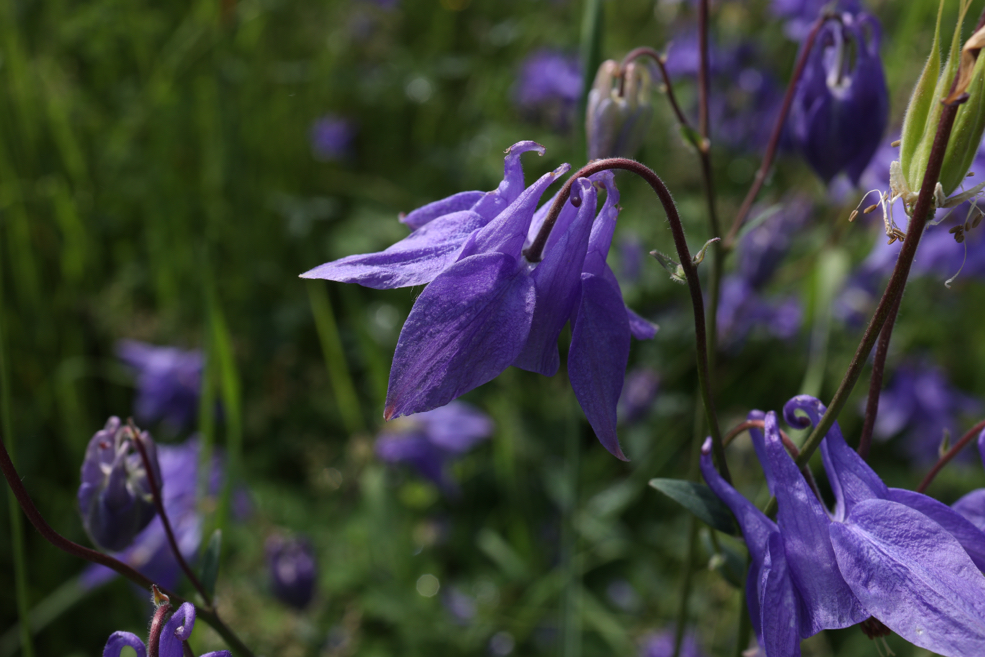
This is especially necessary if you have sown in pots and not incorporated a layer of vermiculite in the soil.
The ideal spot for the trays or pots would be a cool place where they get a few hours of sunlight.
Under a window in an unheated shed would be perfect so long as the temperature hovers between 15-20°C.

If the weather is not sufficiently cool, place the seed tray in the fridge for about two weeks and then shift it to a spot where it will get sunlight or put it under grow lights.
Simply moisten the soil after sowing seeds and make sure you do this regularly.
During cold weather, pots with seedlings or young plants can be placed in a cold frame.
How Many Can You Plant Per Pot?
You should plant one in a pot because this is a bushy plant for the most part.
Yes, you could plant two in a bigger pot but that will not make for good aesthetics.
Potting On
Potting on is a good gardening practice in general but not for each and every type of plant.
Aquilegias are, on the one hand, short-lived perennials, and on the other, develop a long taproot which is sensitive to being disturbed.
Therefore, you should not keep potting on this plant.
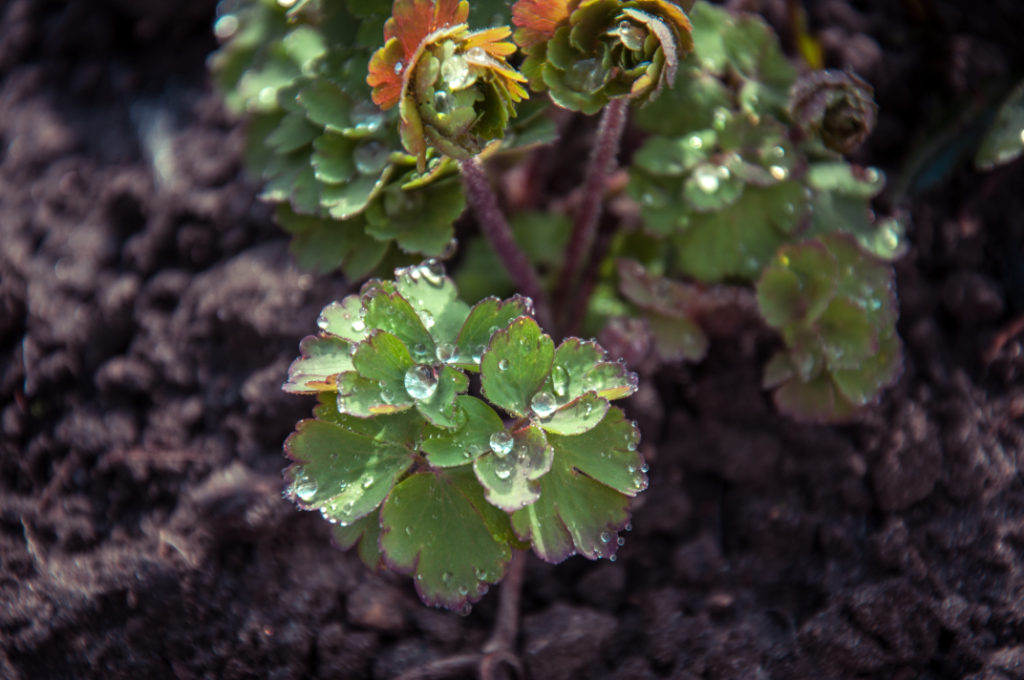
If you have grown it in a seed tray or a small pot, simply pot on or transplant it only once to its final location when it is still a very young, immature plant.
Ideally, you should sow the seeds where you intend for the plants to grow.
If you have bought a potted Aquilegia, pot on or transplant it once to its final location to a larger container or in a garden bed, doing so in the first spring or early in the first autumn.
Potted Aquilegia Plant Care
Mature Aquilegias need a fair amount of sunlight so site them where they will get more sun and less shade.
Above all else, they do not do well in dry soil or in waterlogged soil, and containers’ soil dries out quicker than ground soil.
Be sure to water them, but in strict moderation, on a regular basis as soon as the soil dries out.
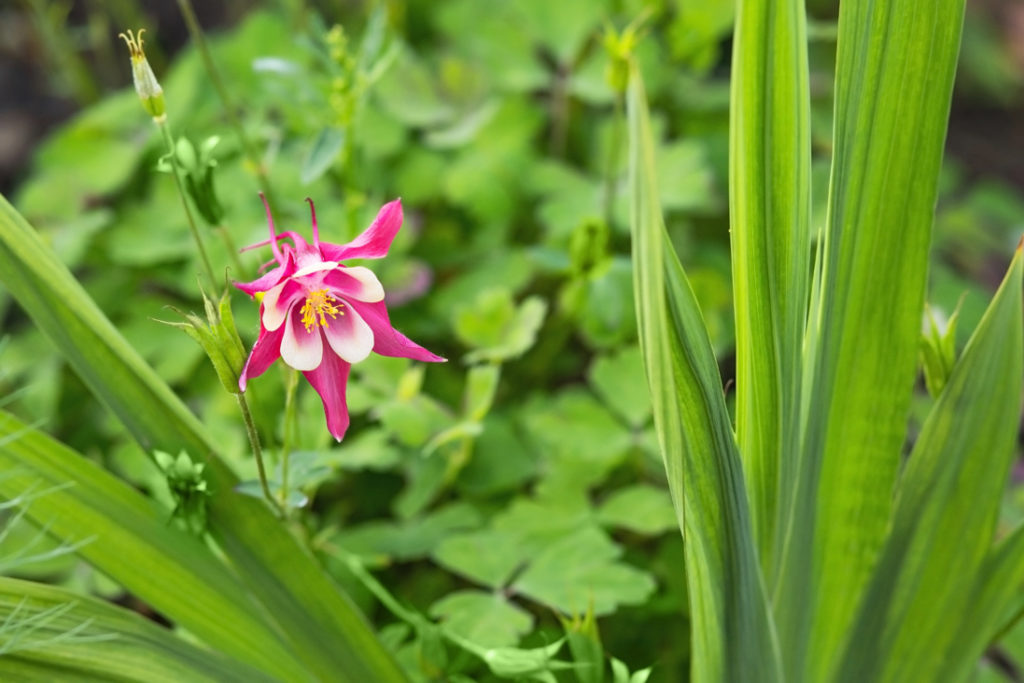
Fertilise the plants once before the flowering season is due to start and once more midway through the season.
Use a suitably diluted balanced liquid fertiliser or a ready-to-pour liquid formula designed for potted flowering plants.
You may or may not want to deadhead these plants, but if you don’t deadhead, then the flowers will go to seed.
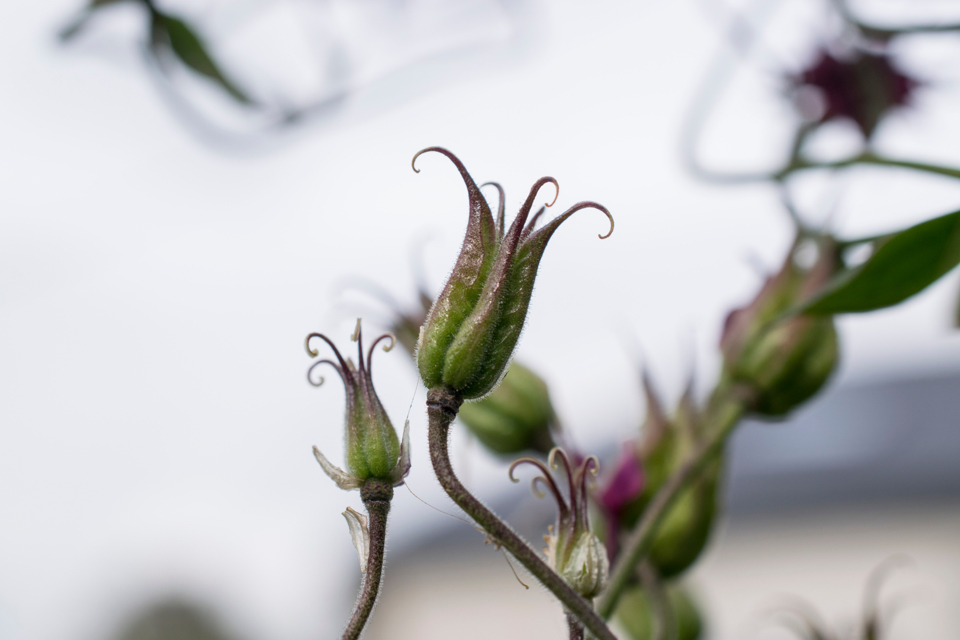
Aquilegias self-seed, so you will get new varieties every year, but they are also prolific self-seeders so you may end up with a thicket of Aquilegias!
On the other hand, if you deadhead spent flowers, you will see an abundance of flowers on the plant, and it will also be a little longer lived.
Balancing the advantages and disadvantages, you may want to let some flowers go to seed while deadheading a majority.

